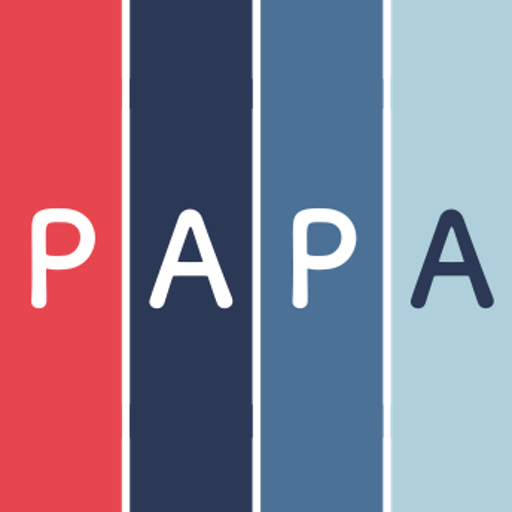Six Common Organizational Identifiers 🗂

DID, GLN, DUNS, BIC, TIN, and LEI organization identifiers are indispensable tools in the modern business world, where B2B value is high and cross-border trade and supply chain management are complex. Such organizational identifiers help streamline transactions, communication, trust, and collaboration between different parties by identifying and connecting the parties involved.
All mentioned identifiers, with the exception of DUNS, are listed in the World Trade Organization’s Standards Toolkit for Cross-border Paperless Trade.
Decentralized Identifier (DID)
A Decentralized Identifier (DID) is a type of globally unique identifier that is designed to provide a method for individuals, organizations, or things to create and control their digital identities in a decentralized manner. DIDs are a foundational component of decentralized identity systems, which aim to give individuals greater control and ownership over their digital identities and personal data.
A DID is represented as a URL-like string that begins with the “did:” prefix, followed by a method identifier that specifies the system or protocol used to manage the identifier. For example, a DID might look like this: did:example:123456789.
DIDs are designed to be persistent, meaning that they should continue to be resolvable and valid over time, even if the underlying systems or services change. They can be associated with various types of cryptographic keys and other data, allowing the owner of the DID to prove their control over it and use it to authenticate themselves in digital interactions.
Decentralized identity systems aim to address some of the limitations and challenges associated with centralized identity management, such as the reliance on third-party intermediaries and the lack of control individuals have over their personal data. DIDs provide a standardized framework for creating and managing decentralized identities in a secure, privacy-preserving, and interoperable manner.
Use case: DID can be used to store or reference verifiable digital identities for people, organizations, and devices, enabling secure and private communications, transactions, and authentication across industries such as finance, healthcare, and supply chain management.
Global Location Number (GLN)
The Global Location Number (GLN) is a unique identification number assigned to a specific physical location or entity within a supply chain or business network. GLNs are part of the GS1 System, which is a global set of standards used for identifying and tracking goods, services, and locations.
What is GS1 system?
The GS1 System is a global set of standards developed and maintained by GS1, a not-for-profit organization. It provides a framework for unique identification, barcoding, and data exchange in various industries, including retail, healthcare, logistics, and more. The GS1 System aims to enable accurate and efficient business communication, supply chain management, and product traceability.
The core components of the GS1 System include:
- Global Trade Item Number (GTIN): GTIN is a unique number used to identify products and services. It is often encoded into barcodes and is globally recognized.
- Global Location Number (GLN): GLN is a unique identifier for physical locations within a supply chain or business network.
- Global Product Classification (GPC): GPC provides a standardized classification system for products based on their attributes and characteristics.
- Global Data Synchronization Network (GDSN): GDSN is a network that allows businesses to exchange product information, such as descriptions, prices, and availability, in a standardized and synchronized manner.
- Electronic Data Interchange (EDI): EDI enables the electronic exchange of business documents, such as purchase orders and invoices, using standardized formats.
The GS1 System provides a common language for businesses to communicate and collaborate effectively, ensuring accurate product identification, efficient supply chain operations, and improved visibility across the entire value chain. It helps reduce errors, increase efficiency, and enhance consumer safety by facilitating the tracking and tracing of products throughout their lifecycle.
GLNs are typically used to identify specific physical locations such as warehouses, distribution centers, retail stores, and individual departments within organizations. They provide a standardized way to uniquely identify and differentiate between various locations, facilitating efficient supply chain management, logistics, and business operations.
A GLN is a 13-digit number that consists of a company prefix, which identifies the organization or company, and a location reference number, which identifies the specific location within that organization. The GLN can be represented in a barcode format for ease of scanning and automated data capture.
Use case: By using GLNs, businesses can streamline processes such as inventory management, shipping, and product tracking across different locations and trading partners. GLNs enable accurate and reliable communication of location information within supply chains, helping to improve efficiency, traceability, and visibility of goods and services.
Data Universal Numbering System (DUNS)
DUNS is a unique nine-digit identifier developed and maintained by Dun & Bradstreet (D&B), a global data and analytics company. The DUNS number is used to identify and track businesses and organizations worldwide.
The key features of the DUNS system include:
-
Unique Identification: Each DUNS number is unique to a specific business entity or organization. It helps differentiate businesses and avoid confusion or duplication.
-
Business Verification: DUNS numbers are often used for business verification purposes. The number can provide information about a company’s legal entity structure, ownership, and location.
-
Standardization: DUNS numbers provide a standardized way to identify and categorize businesses globally. This facilitates data exchange, business reporting, and analysis across different systems and organizations.
-
Risk Assessment: DUNS numbers play a role in assessing the creditworthiness and financial stability of a business. Lenders, suppliers, and partners may use DUNS numbers to evaluate the risk associated with engaging in business relationships.
Use case: DUNS numbers are widely recognized and utilized by various entities, including government agencies, corporations, and financial institutions, as a way to uniquely identify businesses and establish their credibility and reliability. The DUNS system is particularly prevalent in the procurement and business credit domains.
Bank Identifier Code (BIC)
BIC also known as SWIFT-BIC or SWIFT code, is a unique identification code used to identify specific banks or financial institutions worldwide. BICs are assigned and maintained by the Society for Worldwide Interbank Financial Telecommunication (SWIFT), an international organization that facilitates secure financial messaging and communication between banks.
The BIC consists of either 8 or 11 characters and is structured as follows:
- The first four characters represent the bank’s code or institution code, which identifies the financial institution.
- The next two characters represent the country code, indicating the country where the financial institution is located.
- The following two characters represent the location code, which identifies the specific branch or office of the financial institution.
- Lastly, if the BIC is 11 characters long, it may include an optional three-character branch code that further specifies the particular branch.
Use case: BICs are used in international financial transactions, particularly for cross-border wire transfers, to ensure accurate routing and identification of banks involved in the transaction. The BIC serves as a standardized format for addressing and communicating with financial institutions globally.
Trade Identification Number (TIN)
TIN is a unique identifier assigned to Authorized Economic Operator (AEO), a party involved in the international movement of goods that has been certified by a national Customs administration. TINs are assigned by national bodies, typically governmental, for the purposes of customs processing of import and exports. TINs are not publicly available or referenceable. More info available at: WCO Guidelines on Trader Identification Number.
Use case: TIN may be used to uniquely identify traders or businesses engaged in specific types of trade or activities. This identification number can be used for regulatory compliance, licensing, or monitoring purposes within the specific trade or industry.
Legal Entity Identifier (LEI)
LEI is a 20-character alphanumeric code that uniquely identifies legal entities and group structures in a live, publicly accessible database. It was introduced by the supra-national not-for-profit Global Legal Entity Identifier Foundation (GLEIF) under the direction of the G20 and Financial Stability Board (FSB) as a single identifier to enhance transparency of “who is who” and “who owns whom”, to identify counterparties and reduce risk in transactions.
Over 300 regulations require or recommend the use of LEI. LEIs are only issued by GLEIF-accredited LEI Issuers with assistance of LEI Registration Agents. LEIpapa is an official LEI Registration Agent of Ubisecure RapidLEI.
What is an LEI number (LEI code)?
Who needs an LEI?
Use Case: LEI is used to identify parties involved in financial transactions, including banks, investment firms, and corporations. It helps regulators monitor systemic risks, reduce financial fraud, and increase transparency in financial markets. More recently the LEI has been incorporated into innovative new use cases including entity data management, digital signing, B2B Identity & Access Management and others.
Conclusion
Organization identifiers evolved for jurisdictional or vertical markets, historically leading to an over-complex and confusing choice for businesses. The LEI is designed to simplify the concept of organization identity by providing both accessible identity reference data, and acting as a “connector” to other specific-purpose identifiers. For example, a partnership between the GLEIF and SWIFT to publish BIC-to-LEI mapping demonstrates the flexibility of the LEI to co-exist alongside legacy identifiers, to simplify otherwise costly entity data management processes.
Global trade needs a standardized organization identifier, and fortunately the LEI is well on the way to making the case to be what the GLEIF calls the one. Today the way the LEI is used has been revolutionized by modern technology and LEIpapa proposes new ways of keeping the LEI system secure and relevant. Automating and digitizing many manual processes have resulted in significant time and cost savings.

